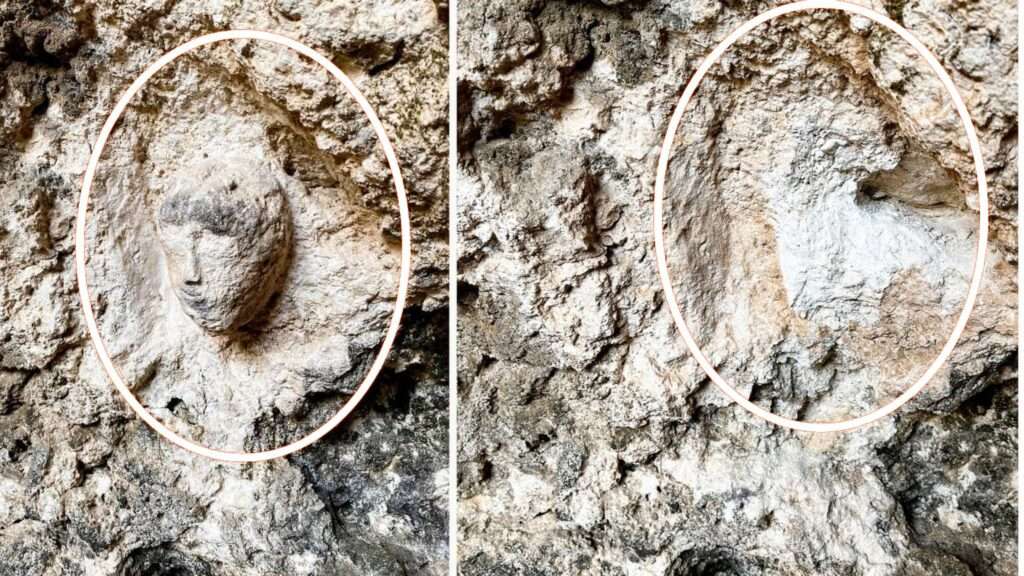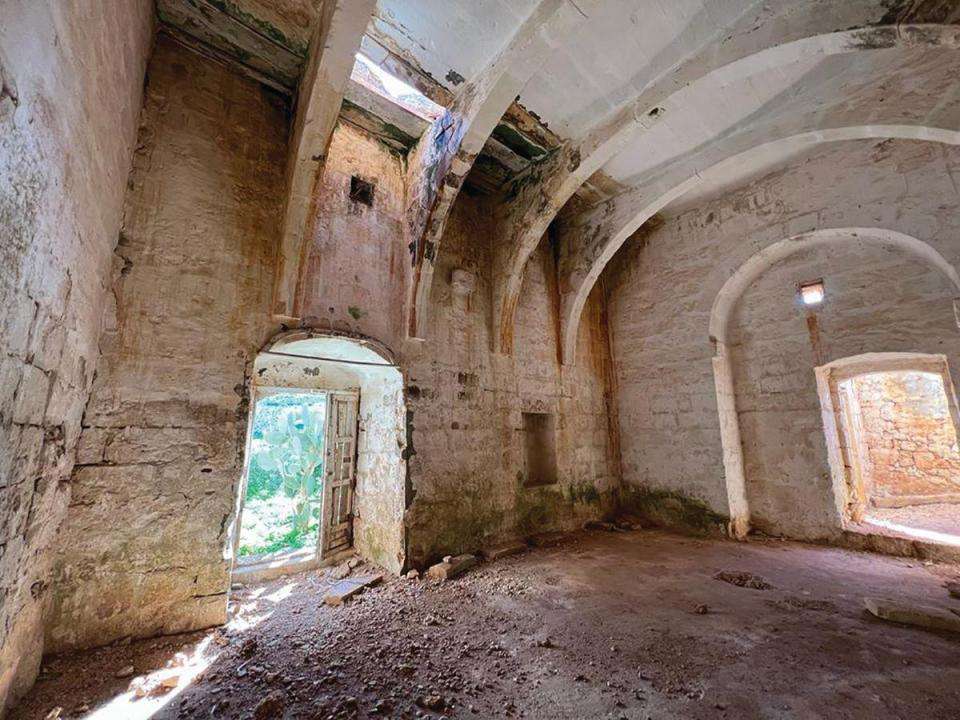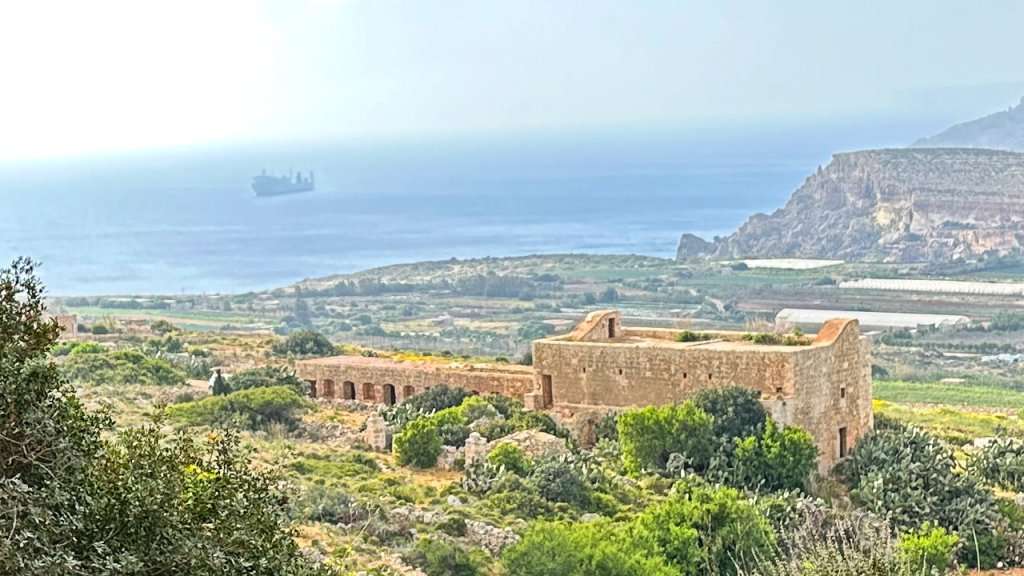Table of Contents
ToggleExploring Ghar ta Zamberat and Ir-Razzett tax-Xitan in Mellieha
In the scenic northern landscapes of Malta, Mellieha hosts two fascinating landmarks that intertwine natural beauty, history, and legend: Ghar ta Zamberat and Ir-Razzett tax-Xitan (The Devil’s Farmhouse). Whether you’re a nature enthusiast or a history buff, these sites offer a compelling journey into Maltese culture and folklore.
Ghar ta’ Zamberat: Nature’s Quiet Marvel
L-Ghar ta’ Zamberat is a modest yet captivating cave entrance perched on Mellieha’s rugged coastal terrain. Though less famous than Malta’s larger cave networks, its charm lies in its solitude and natural simplicity on top of Ghadira Bay and Popeye Village. The cave is situated in a relatively undisturbed area, offering panoramic views across the countryside and towards the shimmering Mediterranean.
This offbeat spot is ideal for light hikes, photography attempts at golden hour, or peaceful escapes from urban bustle. The terrain around it is characterized by limestone formations and hardy scrubland typical of Malta’s northern hills. There are no formal trails or amenities here, so visitors should come prepared with water, sturdy footwear, and a spirit of exploration.

A Vandalised Face on the Cave
Unfortunately, Ghar ta’ Zamberat has also become a site of controversy. Carved into the rock near the cave entrance is what many locals call a “stone face”—a weathered profile that nature itself seemed to sculpt over centuries. However, in recent years this natural wonder has been marred by vandalism. Parts of the rock face have been chipped and defaced, leaving visible scars that detract from its mystery.
Heritage enthusiasts and residents have expressed concern, noting how such damage erodes not only the cave’s natural charm but also Mellieha’s cultural landscape. Efforts have been suggested to raise awareness and encourage respect for natural landmarks, so that future visitors can still marvel at what remains of this once-enigmatic feature.

Ir-Razzett tax-Xitan - History, Myth, and Architecture
A short distance away stands Ir-Razzett tax-Xitan, a weathered yet remarkable vestige of Malta’s 18th-century architectural legacy. Also officially known as Ir-Razzett Tax-Xjaten, this structure originally served as a horse stable and riding school—built during the era of the Knights of St. John.
Legends and Lore
Its foreboding nickname, The Devil’s Farmhouse, stems from local folklore. Tales claim it was erected by supernatural forces in a single night—or three—possibly by the devil or his minions. Some say the building was exorcised by a courageous priest from the nearby Sanctuary of Our Lady of Mellieha, and a cross potent carved above one doorway was left as a ward against evil.
Such myths may have served pragmatic purposes. For example, some suggest the name was intentionally eerie to deter unwanted attention—perhaps from curious villagers—while knights used the remote building for discreet meetings.
Architectural Curiosities
The building breaks from typical regional farmstead layouts. Instead of a central courtyard and agricultural rooms, it comprises two unconnected structures: one a large residential-like space with lofty vaulted ceilings supported by diaphragm rib arches; the other a long stable with feeding mangers designed for horses.
A striking feature is the twin enclosed staircases leading to the roof—visible from afar as “horns,” possibly contributing to the folklore around its infernal name. Some scholars propose these staircases resemble those found in Hospitaller defensive towers—raising the possibility that the building had a defensive, rather than purely agricultural, function.
Constructed from limestone slabs, with slit windows and Roman numeral markings left by later farmers, the farmhouse is an exemplar of vernacular architecture—but one imbued with unique and cryptic design choices.
Present-Day Status
Today, Ir-Razzett tax-Xitan is in a dilapidated state, with parts of the roof collapsed and the structure exposed to further deterioration. Yet it retains national heritage status: it is protected as a Grade 1 scheduled building by the Malta Environment and Planning Authority and is listed in the National Inventory of Cultural Property (NICPMI).
Conservationists and heritage organizations have appealed for restoration efforts, emphasizing its architectural and cultural importance—and imploring that it be preserved for public appreciation rather than neglected.

Why These Sites Matter
But Caravaggio could not escape his demons. In August 1608, just months after becoming a knight, he clashed violently with fellow members of the Order. Accounts suggest he injured a senior knight in a brawl.
He was arrested and thrown into Fort St Angelo, Malta’s formidable prison. Somehow, he managed a daring escape, fleeing the island in the dead of night. By December, the Order expelled him in disgrace, describing him as a “rotten and diseased limb.” Caravaggio’s brief Maltese chapter had ended as dramatically as it began.

Visiting Tips & Ideas
Proximity: The sites are close—ideal for pairing in a single walking trip.
Preparation: Wear solid shoes, bring water, and perhaps a flashlight for the cave.
Photographic Merit: Visit during sunrise or sunset for atmospheric lighting on limestone landscapes and ruins.
Respect the Sites: Avoid disturbing fragile rock formations or leaving behind litter. Protect what remains for future generations.
Storytelling: Infuse your visit with local songs, poems, or folklore—like the carnival verse:
“Illum il-Karnival / Il-Festa tax-Xitan / Ix-Xitan irid Ikanta / Ghndu denbu daqs ta’ Randa.”
(This carnival day, the devil’s feast, the devil must sing—his sin is as big as Randa.)
Such details bring history to life and connect readers to a living tradition.



